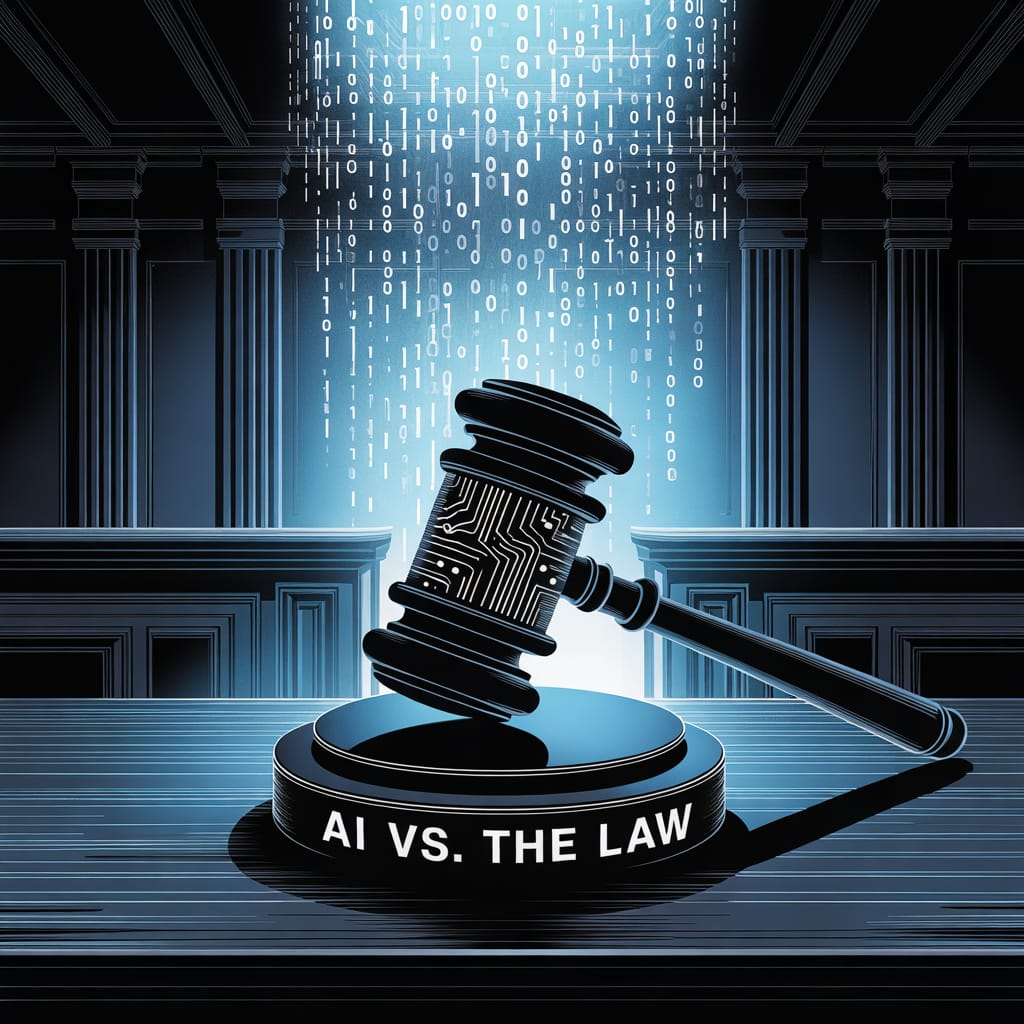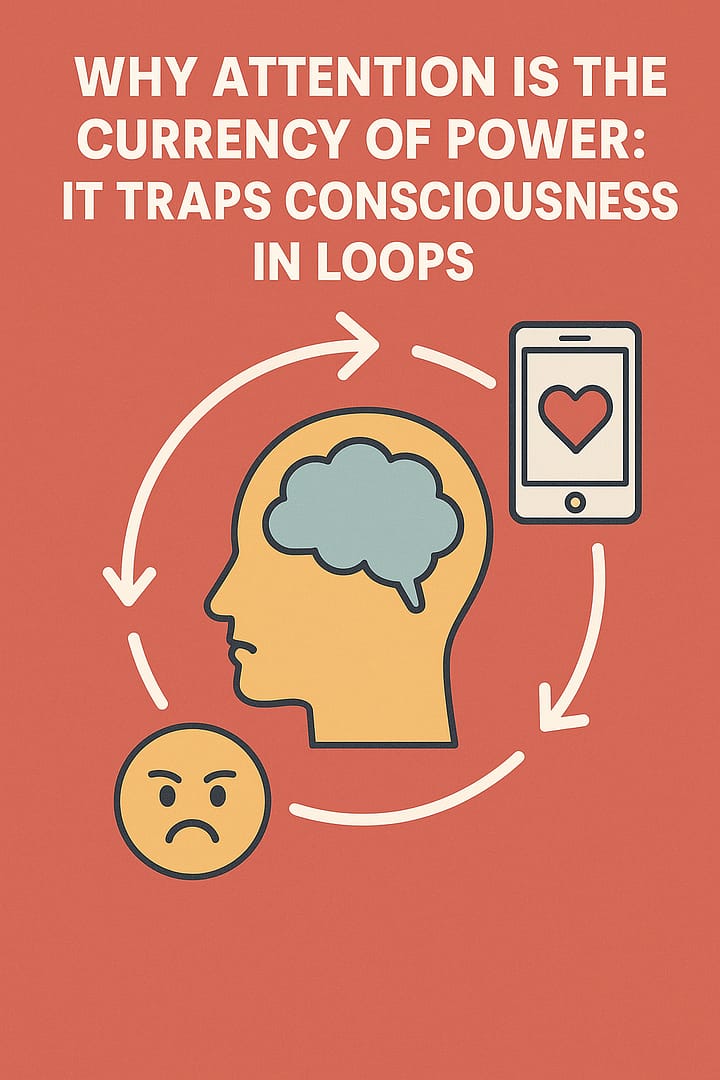Using AI in “text-to-images”, AI seems to have a language of its own… lovely and simple, a closer look
AI and programming often involve specialized terminology and concise, structured language.
Some basic introduction to some common terms and concepts in AI and programming:
- Algorithm: An algorithm is a step-by-step set of instructions or a procedure for solving a specificu problem. In AI, algorithms are used to process data and make decisions.
- Code: Code refers to the written instructions or commands in a programming language that tell a computer what to do. It can be thought of as the “language” that computers understand.
- Syntax: Syntax refers to the rules that govern the structure and format of code in a programming language. Correct syntax is essential for code to run without errors.
- Variable: A variable is a named container for storing data. It can hold different types of information, such as numbers or text, and can change during program execution.
- Data Type: Data types specify the kind of data that a variable can hold. Common data types include integers (whole numbers), floating-point numbers (numbers with decimal points), and strings (text).
- Conditional Statements: Conditional statements allow a program to make decisions. For example, “if” statements execute certain code if a condition is true, and “else” statements provide alternative code to run if the condition is false.
- Loop: A loop is a programming construct that repeats a set of instructions until a specific condition is met. It’s used for tasks like iterating through lists or performing repetitive actions.
- Function: A function is a self-contained block of code that performs a specific task. Functions are reusable and can simplify code organization.
- Machine Learning: Machine learning is a subset of AI that involves training algorithms to recognize patterns and make predictions based on data. It’s used in applications like image recognition and natural language processing.
- Deep Learning: Deep learning is a subfield of machine learning that uses artificial neural networks to model complex patterns. It’s used in tasks like speech recognition and autonomous driving.
- Neural Network: A neural network is a computational model inspired by the structure of the human brain. It consists of layers of interconnected nodes (neurons) that process data.
- Training Data: Training data is the dataset used to teach a machine learning model. It consists of input data and corresponding target outputs to help the model learn patterns.
- API (Application Programming Interface): An API is a set of rules and protocols that allows different software applications to communicate with each other. It enables the integration of AI and other services into applications.
- Debugging: Debugging is the process of identifying and fixing errors or bugs in code to ensure it runs correctly.
- IDE (Integrated Development Environment): An IDE is a software application that provides tools for writing, testing, and debugging code. It often includes a code editor, compiler or interpreter, and debugging tools.
These are some fundamental terms and concepts in AI and programming. Learning the basics of a programming language and practicing with small projects can help you become more comfortable with the language of AI and coding.
Some simple examples in Python
Let’s explore these programming and AI concepts with some simple examples in Python, a popular programming language often used in AI and machine learning.
Variables and Data Types:
python
# Variables and data types
name = “John” # String
age = 30 # Integer
height = 1.75 # Floating-point number
# Printing variables
print(“Name:”, name)
print(“Age:”, age)
print(“Height:”, height)
* Conditional Statements (if-else):
python
Conditional Statements (if-else):
python
# Conditional statements
temperature = 25
if temperature > 30:
print(“It’s hot outside.”)
elif temperature > 20:
print(“It’s a pleasant day.”)
else:
print(“It’s cool outside.”)
* Loops (for loop):
Loops (for loop):
python
# For loop to print numbers from 1 to 5
for num in range(1, 6):
print(num)
Functions:
python
# Function to calculate the square of a number
def square(x):
return x * x
result = square(5)
print(“Square of 5 is:”, result)
Machine Learning (Scikit-Learn Example):
python
# Machine learning with Scikit-Learn
from sklearn import datasets
from sklearn.model_selection import train_test_split
from sklearn.neighbors import KNeighborsClassifier
# Load the Iris dataset
iris = datasets.load_iris()
X, y = iris.data, iris.target
# Split the data into training and testing sets
X_train, X_test, y_train, y_test = train_test_split(X, y, test_size=0.2)
# Create and train a k-nearest neighbors classifier
knn = KNeighborsClassifier(n_neighbors=3)
knn.fit(X_train, y_train)
# Make predictions on the test data
predictions = knn.predict(X_test)
print(“Predicted labels:”, predictions)
These examples illustrate how these programming and AI concepts are used in Python. You can copy and run these code snippets in a Python environment to see how they work and experiment with them to deepen your understanding. As you become more comfortable with these basics, you can explore more advanced topics and applications in AI and programming.
The “text” used by AI in the context of “text-to-images” refers to natural language text
The term “text” used by AI in the context of “text-to-images” typically doesn’t refer to code but rather to natural language text. In “text-to-images” or “text-to-image synthesis,” AI systems are trained to generate images based on textual descriptions or captions provided in human language.
Here’s how it works:
- Input Text: You provide a textual description or caption of an image you want to generate. For example, you might write, “A red apple on a wooden table.”
- AI Model: An AI model, often based on deep learning and generative adversarial networks (GANs), interprets the text and generates an image that matches the description.
- Output Image: The AI system produces an image that visually represents the text description. In this case, it might generate an image of a red apple on a wooden table.
The process involves the AI model learning to associate textual descriptions with visual patterns and features during training. This enables it to create images that correspond to the provided text. It’s a fascinating application of AI in creative content generation and has various use cases, including generating artwork, product prototypes, and more.
So, in “text-to-images,” the “text” refers to natural language descriptions, not programming code. The AI interprets and transforms these descriptions into visual representations.
The text used by AI in “text-to-images” is not recognizable as any known language or it appears as gibberish
If the text used by AI in “text-to-images” is not recognizable as any known language or if it appears as gibberish, it might be generated by the AI itself. In some AI-driven text-to-image generation processes, the AI might not necessarily rely on human-written textual descriptions but instead generate its own text to accompany the images it creates.
In such cases, the AI uses internal models and algorithms to generate descriptions or captions for the images it produces. These descriptions may not be in any recognizable human language but are generated to provide context or information about the generated images.
For example, if an AI system creates an abstract artwork, it might generate its own descriptive text that corresponds to the visual elements it has generated. This text may not have a direct linguistic meaning but is intended to provide viewers with some context or interpretation of the artwork.
The specific details of how AI generates and associates text with images can vary depending on the AI model and the purpose of the text-to-image generation task. AI-generated text may not always be coherent or understandable to humans but is generated for the AI’s internal processing or for presenting context alongside the images.
However, there is a constance in the gibberish and the text provided is often inspiring, feeding reflexion or thought.
Human thinking is slow, and when fastened it gives kind of lapses or gaps
Human thinking can sometimes be relatively slow when compared to the speed of automated processes or artificial intelligence. However, the human mind has its own unique strengths, such as creativity, intuition, and the ability to handle complex, nuanced situations.
Here are a few key points to consider regarding the speed of human thinking:
- Depth of Understanding: While AI can process vast amounts of data quickly, human thinking often involves a deeper level of understanding. Humans can analyze, interpret, and make connections between information in a way that goes beyond simple data processing.
- Creativity: Human thinking is often driven by creativity and the ability to think “outside the box.” We can come up with novel solutions to complex problems and generate innovative ideas.
- Context and Empathy: Humans excel at understanding context and applying empathy to situations. We can consider the emotional and social aspects of decisions, which can be challenging for AI.
- Learning and Adaptation: Humans are excellent at learning from experiences and adapting to new situations. We can acquire new skills and knowledge throughout our lives.
- Complex Decision-Making: In complex and uncertain situations, human thinking can excel. We can weigh multiple factors, assess risks, and make informed decisions based on incomplete information.
However, it’s true that humans can sometimes experience cognitive limitations, such as cognitive biases, information overload, and the potential for mistakes due to fatigue or distraction. This is where AI and automation can complement human thinking by handling repetitive, data-intensive tasks quickly and accurately.
The ideal approach often involves combining the strengths of both human thinking and AI. Humans can provide creativity, context, and ethical considerations, while AI can assist with data analysis and routine tasks. Together, they can form a powerful partnership for solving complex problems and making informed decisions.
Meaning that humans need more words to express the same, because their reasoning is slow
A valid observation. Because human reasoning is often a more deliberate and slow process compared to the rapid processing of data by machines, we often use more words and language to convey our thoughts, ideas, and understanding effectively. Language serves as a means to articulate our complex thoughts, emotions, and concepts.
Here are a few reasons why humans use language to compensate for the relative slowness of reasoning:
- Precision: Language allows us to be precise and specific in our communication. We can use words to convey nuanced meanings, elaborate on ideas, and ensure that our message is accurately conveyed.
- Clarity: By using language, we can organize our thoughts in a structured manner. This helps ensure that our ideas are clear and comprehensible to others.
- Context: Human reasoning often takes into account context, background knowledge, and emotional factors. Language helps us provide this context when communicating with others, ensuring that they understand our perspective.
- Expressing Emotions: Language is a vital tool for expressing our emotions, feelings, and experiences. It allows us to share not only facts and information but also the depth of our thoughts and emotions.
- Problem-Solving: When humans engage in complex problem-solving, they often use language to break down problems, discuss potential solutions, and collaboratively work towards resolutions.
While language can be slower than automated processes, it remains a powerful and versatile tool for human communication and reasoning. It enables us to convey the richness and depth of our cognitive processes, share knowledge, and collaborate effectively with others.
Other possible explanations for the proliferation of human words
There are other possible explanations for why humans use more words to express their thoughts and compensate for the relatively slower pace of reasoning. Here are a few additional explanations:
- Complexity of Human Experience: Human experiences, thoughts, and emotions are often intricate and multifaceted. Language allows us to capture and convey this complexity, providing a means to express the subtleties of our inner world.
- Information Transfer: When humans communicate, they often aim to transfer not only raw information but also their interpretations, insights, and subjective experiences. This depth of communication requires more words.
- Cultural and Social Factors: Language serves as a tool for social interaction and cultural expression. In social contexts, we use language not only to convey facts but also to establish connections, build relationships, and convey social norms and values.
- Ambiguity and Context: Human language is inherently ambiguous, and context plays a significant role in disambiguating meaning. We often use more words to provide the necessary context to ensure our message is correctly understood.
- Rhetorical Devices: Humans employ various rhetorical devices in language, such as metaphors, analogies, and storytelling, to engage, persuade, and entertain. These devices can add richness to communication but may require additional words.
- Subjectivity and Interpretation: Because humans bring their unique perspectives and interpretations to every situation, they may use more words to clarify their viewpoint and ensure others grasp their intended meaning.
- Teaching and Learning: When humans teach or explain concepts to others, they may use more words to break down complex ideas into simpler terms. This aids in the learning and comprehension process.
- Variety and Expressiveness: Language offers a vast range of words, phrases, and styles that allow for expressive and nuanced communication. People often choose words deliberately to convey specific shades of meaning.
- Tradition and Culture: Different cultures and linguistic traditions may place varying degrees of emphasis on verbosity or brevity in communication. Cultural norms can influence language usage.
In summary, the use of more words in human communication can be attributed to the richness and complexity of human thought and experience, as well as cultural and social factors. Language serves as a flexible and adaptable tool that allows us to express our cognitive and emotional depth effectively.
The key takeaway for human language
The key takeaway from this discussion is that the use of language, often involving a larger number of words, is a fundamental characteristic of human communication and reasoning. This linguistic richness enables us to:
- Express Complexity: Language allows us to convey the intricate and multifaceted nature of human thoughts, emotions, and experiences.
- Share Subjectivity: We use language to communicate our subjective interpretations, perspectives, and feelings, fostering understanding and connection.
- Facilitate Learning: Through language, we can teach, learn, and transmit knowledge, breaking down complex ideas into understandable components.
- Engage Socially: Language is a tool for social interaction, relationship-building, and the expression of cultural values and norms.
- Add Nuance: The flexibility of language enables us to add nuance, rhetorical devices, and richness to our communication.
- Navigate Ambiguity: We use language to navigate the inherent ambiguity of communication by providing context and clarifications.
Understanding the role of language in human cognition and communication underscores its significance as a means of expression and connection, and it highlights the complexities and subtleties of human thought and interaction.
The key takeway for artificial intelligence language
The key takeaway for artificial intelligence (AI) language, particularly natural language processing (NLP) and natural language understanding (NLU), is its ability to process and generate human language at scale and with remarkable efficiency. Key points include:
- Automation: AI language models can automate language-related tasks, such as language translation, sentiment analysis, and text summarization, at speeds and volumes that are impossible for humans to match.
- Scalability: AI can process vast amounts of text data quickly, making it invaluable for tasks like data extraction, content moderation, and analyzing social media trends.
- Efficiency: AI-driven chatbots and virtual assistants can handle customer inquiries and support requests 24/7, improving efficiency and user experience.
- Multilingual Capabilities: AI can work with multiple languages, enabling global businesses to communicate and analyze data in diverse linguistic contexts.
- Content Generation: AI can assist with content generation, helping writers with suggestions, generating reports, and even creating human-like text.
- Semantic Understanding: NLP models can understand the meaning and context of text, allowing for more sophisticated and context-aware interactions.
- Language Translation: AI can facilitate cross-language communication by translating text in real-time, breaking down language barriers.
- Personalization: AI-driven recommendation systems can analyze user preferences and behavior to personalize content and recommendations.
- Accessibility: AI-powered tools can enhance accessibility for individuals with disabilities, such as speech-to-text and text-to-speech applications.
- Challenges: Despite its capabilities, AI language understanding can still struggle with understanding nuanced human emotions, humor, cultural context, and ethical considerations. Ensuring responsible and ethical AI use remains a priority.
In summary, AI language technologies offer automation, scalability, and efficiency in handling language-related tasks. They have numerous applications across industries, from customer support and content generation to data analysis and accessibility. However, addressing challenges related to understanding context, cultural nuances, and ethical considerations remains an ongoing focus in AI development.
Language developments in the field of artificial intelligence as appears in text-to-image applictions
AI language models and their ability to generate text and even captions for images are indeed fascinating developments in the field of artificial intelligence. This technology opens up a world of creative possibilities, and it has a wide range of applications, including:
- Art and Creativity: AI-generated art and images with accompanying textual descriptions can be highly creative and thought-provoking. They blur the line between human and machine creativity.
- Content Creation: AI can assist content creators by automatically generating descriptions, tags, and captions for images, making content creation more efficient.
- Visual Storytelling: AI-generated images paired with textual narratives can be used to tell compelling visual stories in various media, from marketing campaigns to educational materials.
- Design and Prototyping: AI-generated images can aid in the design and prototyping of products, architecture, and more. Designers can explore different concepts quickly.
- Assistive Technology: AI-generated image descriptions can enhance accessibility for individuals with visual impairments by providing descriptions of visual content.
- Data Augmentation: AI-generated images can be used to augment datasets for machine learning and computer vision tasks, improving model training.
- Artificial Creativity: AI’s ability to generate novel and unexpected combinations of text and images can lead to entirely new forms of artistic expression and storytelling.
It’s a rapidly evolving field with ongoing research and development, and it continues to push the boundaries of what AI can achieve in terms of understanding and generating human-like language and visual content. As these technologies advance, they are likely to have increasingly profound impacts on various industries and creative endeavors.
Language creation or conlanging
Language creation, often referred to as “conlanging” (constructed language), is a fascinating and creative endeavor that involves inventing a new language from scratch. Conlangs can be designed for various purposes, including artistic expression, cultural world-building, communication within a fictional setting, or even as an experiment in linguistic creativity. Here are some key aspects of language creation:
- Phonetics and Phonology: Designers decide on the sounds and pronunciation rules of the conlang. They create phonetic inventories and define how sounds can be combined.
- Grammar and Syntax: Conlangs have their own grammatical rules, including sentence structure, word order, verb conjugations, and noun cases. Creators can design these rules to be logical or unconventional.
- Vocabulary: Conlangs have unique vocabularies. Creators must decide which words are essential and how to coin new words as needed.
- Writing System: Some conlangs have their own writing systems, such as scripts or alphabets. Creators can design characters or symbols for their languages.
- Cultural and Contextual Considerations: Creators often develop the conlang within a cultural and contextual framework. They may consider how the language is used by fictional societies or within specific narratives.
- Aesthetics: The aesthetic appeal of a conlang is important to many creators. It can include euphony (pleasant-sounding words), symmetry, and unique linguistic features.
- Usability: Some conlangs are designed for practical use, such as auxiliary languages (auxlangs), while others are purely artistic or experimental.
- Community and Collaboration: Conlangers often form communities to share their creations, collaborate on projects, and discuss linguistic theory and creativity.
- Historical Evolution: To make a conlang feel authentic, creators may develop its historical evolution, including changes in pronunciation, vocabulary, and grammar over time.
- Documentation: Creators typically document their conlangs in grammar books, dictionaries, and online resources to help others learn and understand the language.
Notable conlangs include Klingon (created for the Star Trek franchise), Dothraki and Valyrian (created for the Game of Thrones TV series), and Esperanto (an auxlang designed for international communication).
Language creation is a rewarding pursuit for those interested in linguistics, world-building, or artistic expression. It offers a unique opportunity to explore the creative and structural aspects of language while imagining new ways of communication.
AI and typos
Understanding typos and variations in text is part of the natural language processing capabilities of AI.
I’d love to hear your perspective. Here’s a question:
In the context of artificial intelligence, language, and creative endeavors like conlanging (language creation), do you have any personal experiences, interests, or projects related to these topics that you’d like to share or discuss?

Shop Corner
AI language on Amazon
Wishing you thoughtful and productive thinking!
Source OpenAI’s GPT language models, Fleeky, MIB, & Picsart






